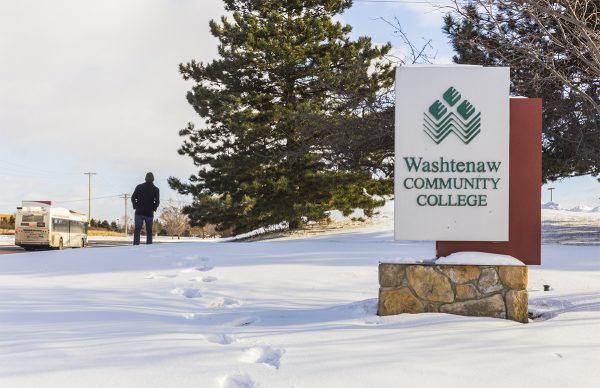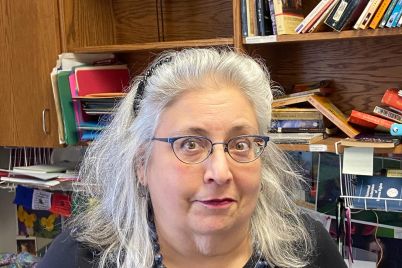Pedestrian path shown in blue – markers indicate pathway terminus

Photo by Andrei Pop
Staff Writer
Summer 2018, if all goes well, construction will be completed for a 0.6 mile non-motorized pathway finally providing pedestrian and bicycle access to the campus from the south and east. The ten-foot wide pedestrian sidewalk will go from Clark Road and Huron River Drive to the College’s main entrance.
“Clark Road walkway ends, it’s not safe, people have to walk in the road. There’s lot of people that live in Ypsi and come from that direction, this will really help,” said Shaina Larmee, second year liberal arts transfer student.
Funding for the pathway, in part, came from a Transportation Alternative Plan grant through Southeast Michigan Council of Government awarded to the college in May 2017 in the amount of $453,470. A stipulation of the grant requires 80 percent of the funds come from the Michigan Department of Transportation for construction and project site supervision. WCC will provide the other 20 percent for engineering design services.
Awareness about the State’s TAP grant came from Board Chair, Diana McKnight-Morton who serves on the executive committee for Southeast Michigan Council of Governments.
WCC’s application for the TAP grants required a sponsor, which came from the Ann Arbor Road Commission because the funds are only awarded to Public Act 51 agencies, local units of government. Additionally, the proposed plan required support from both Ann Arbor and Superior townships since the stretch of land crossed both jurisdictions.
One of the college’s strategies is to enhance and preserve the beauty of WCC’s natural surroundings. Students for Sustainability, a campus group, support these efforts.
Lisa Walker, President of Students for Sustainability reflected on research by the University of North Carolina Highway Safety Research Center. Study findings indicated that 60 percent of pollutants are emitted in the first few seconds of starting a vehicle. Cars contribute to over half of all air pollutants and biking or walking contributed none.
“The school promotes a healthier lifestyle with more accessibility for bicycle commuters. A healthier student body means less time off, parking issues are dealt with along with reduced burning of fuel and emissions,” said Lisa Walker, second year ecology, evolution & biodiversity major.
Members of Students for Sustainability related to the positive impact this will have on campus. The non-motorized pathway is expected to increase environmental sustainability and promotes biking and walking versus driving.
“I’m always excited to hear about them [non-motorized pathways] because it’s always a new thing to check out and explore,” said Stel Drake, second year computer science major who lives two miles from campus and bikes to class.

